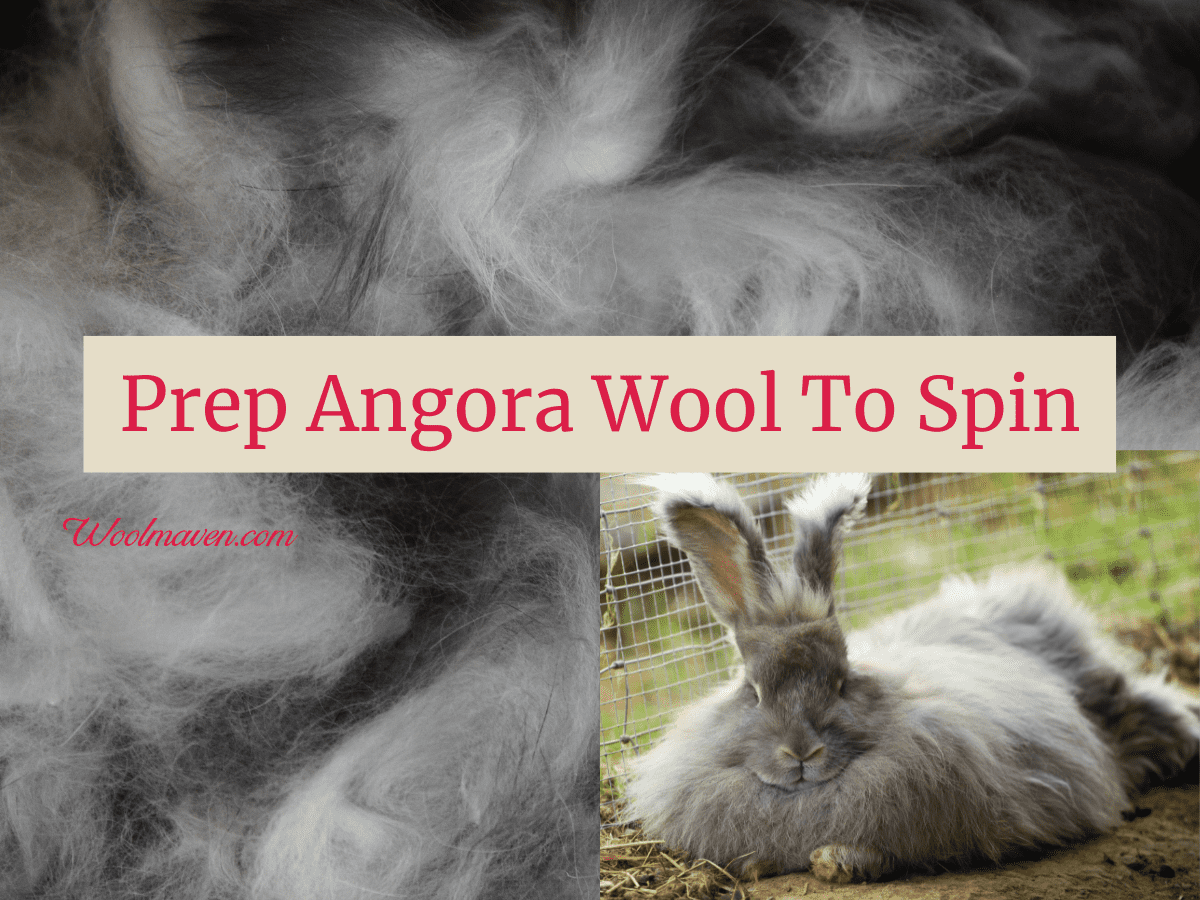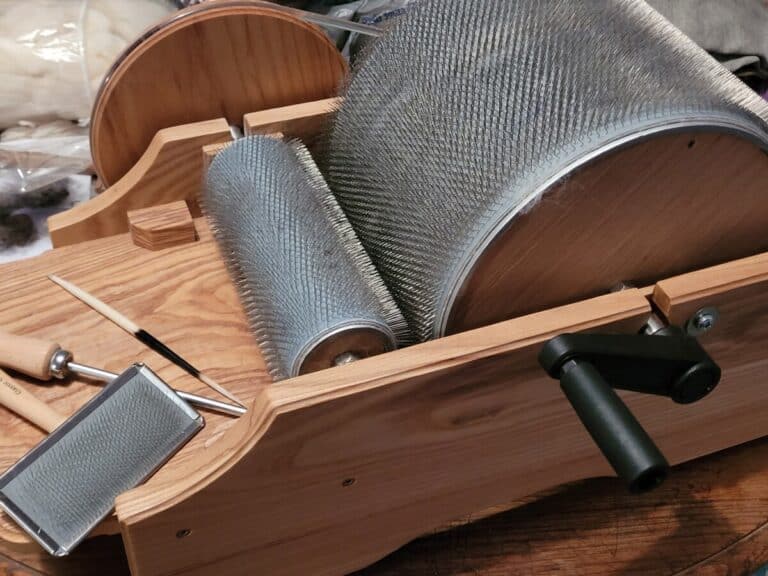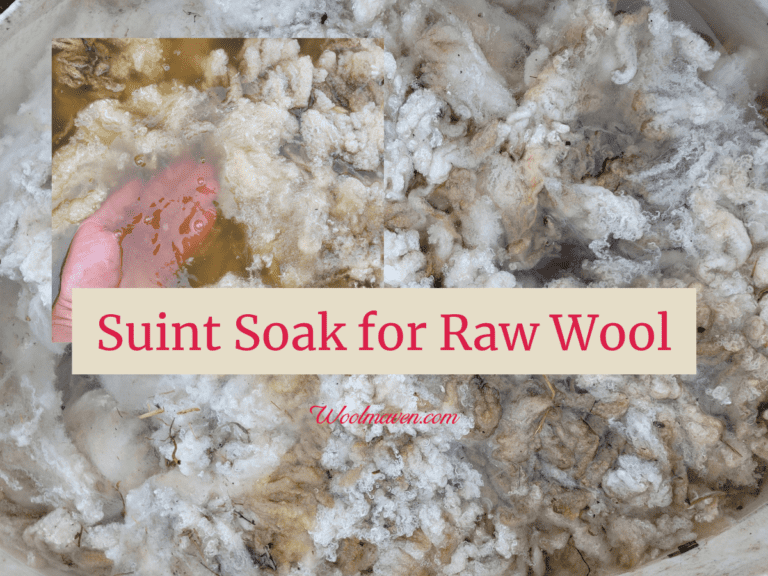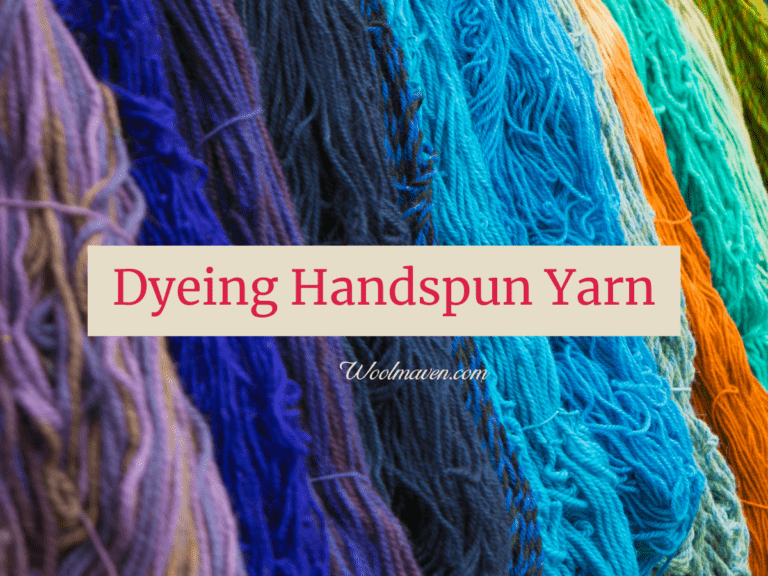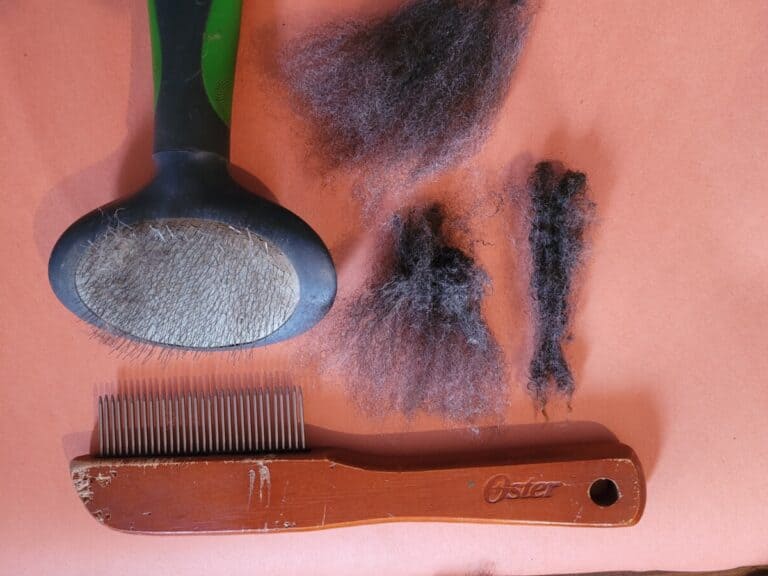How Do You Prepare Angora Wool For Spinning?
Thinking about getting some angora rabbit wool to spin? You’ll be able to spin beautiful, custom made luxury yarn that is soft, soft, soft!
But, what exactly do you do with the angora fiber when you get it? What are the steps you need to take to get angora ready for spinning?
Pros And Cons Of Spinning With Angora Fiber is a general overview of the good and the not so good of working with angora rabbit fiber.
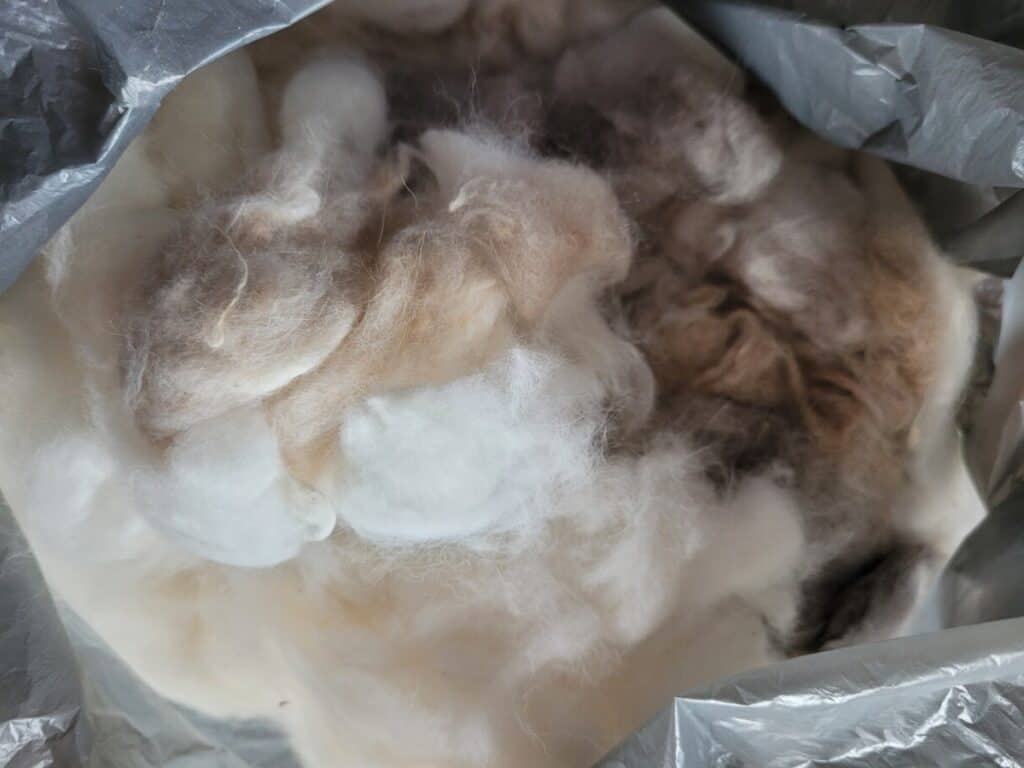
Sort angora wool
The first thing you need to do to get angora wool ready for spinning is to sort the fiber.
You want to be working with only the nicer, premium long fibers. All short cuts, matts or debris need to be pulled out.
The shorter fibers can be used for felting, angora felts well, but they will be difficult to use for spinning and more likely to shed out of your yarn, in addition to causing you problems while spinning!
Is Angora Hard To Spin? gives you the scoop on spinning with this wonderful fiber and has some tips to make your first few attempts easier!
This post contains affiliate links, which means I receive commissions if you choose to purchase through links I provide (at no extra cost to you).
Decompress the fiber
Once you have all of the spinnable fiber sorted out, now is the time to get the air back into the angora.
Chances are your fiber is compacted down from sitting in the box and from being jostled around in shipping. You need to decompress the wool and you’ll do this by carding or combing.
Believe it or not, angora does comb! I can put some of my longer, nicer angora on the combs that I have and make a very nice, fluffy, easy to spin cloud of fiber.
If you have all purpose or finer combs, give it a shot. You’ll be pleasantly surprised!
This wool comb set looks the most beginner friendly to me, and, as a bonus, they come with a holder. I purchased a different set, which are fine, but if I had it to do over again, I’d get these instead.
Carding angora is the more common option and works great with hand carders.
The hand cards that I use are Clemes & Clemes Curved Back Wool Cards. I’ve had them for almost 20 years and use them for all of my hand carding.
All the rules of handcarding wool apply to handcarding angora. Use small amounts of fiber and work off of the bottom third or so of the card.
The great news with handcarding angora is that angora is such a fine fiber that a little goes a long way, especially if you are blending it with wool.
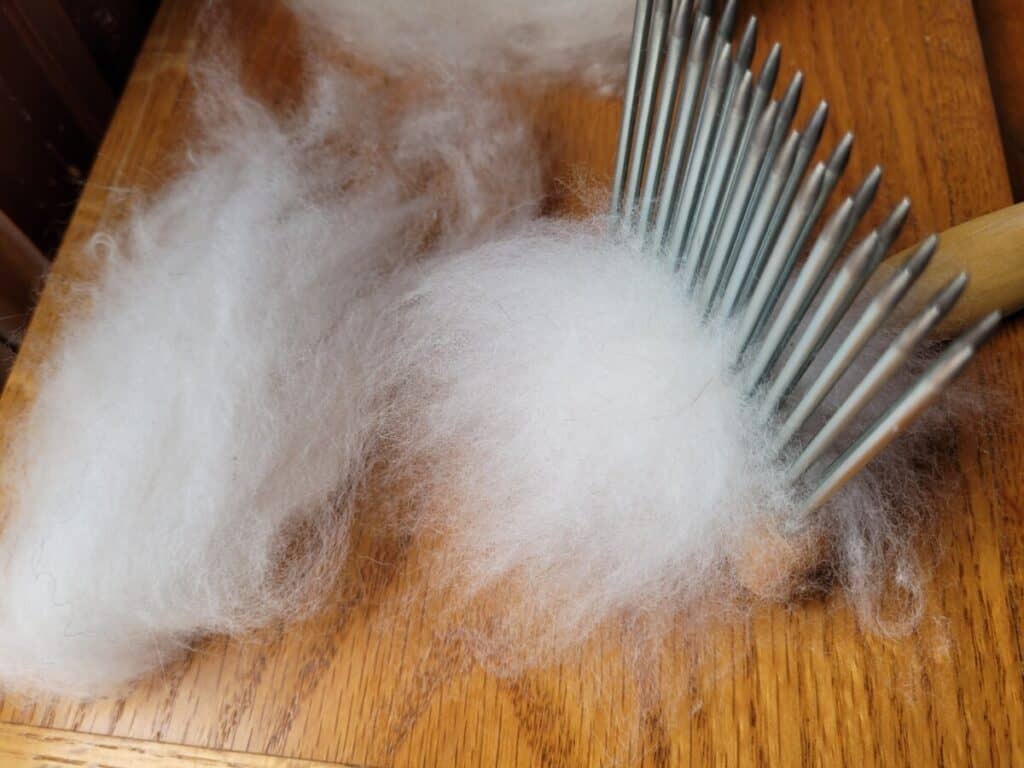
Spritz angora fiber to limit static
Whenever I card or comb angora I end up with static, either a little or a lot!
To deal with the static, most folks have a spritz bottle with water to lightly, very lightly, spritz the fiber when it gets a bit unruly.
Some spinners have a special mix for the spritz, usually drop of oil, hair conditioner or fabric softener in the water, others use plain water. Start with the water and see how it goes.
I try to go without the spritz and sometimes that works, other times not at all.
If I need it, I’ll do a test spray towards the floor first, just to make sure the spritz is super fine. No big drops or worse yet a stream! It must be fine, the finer the better.
I spritz the fiber with a sweeping motion of my arm, so I’ll end up spritzing the table on both sides of the fiber rather than drowning the angora with the spritz.
Go lightly with the spritz! If you put on too much, give the fiber some time to dry a bit before you continue to work with it.
You can also combat the static somewhat by keeping your sleeves away from the angora and only combing or carding as much as you need to, not extra.
Once the static starts to build it only increases, more passes through will not make it go away!
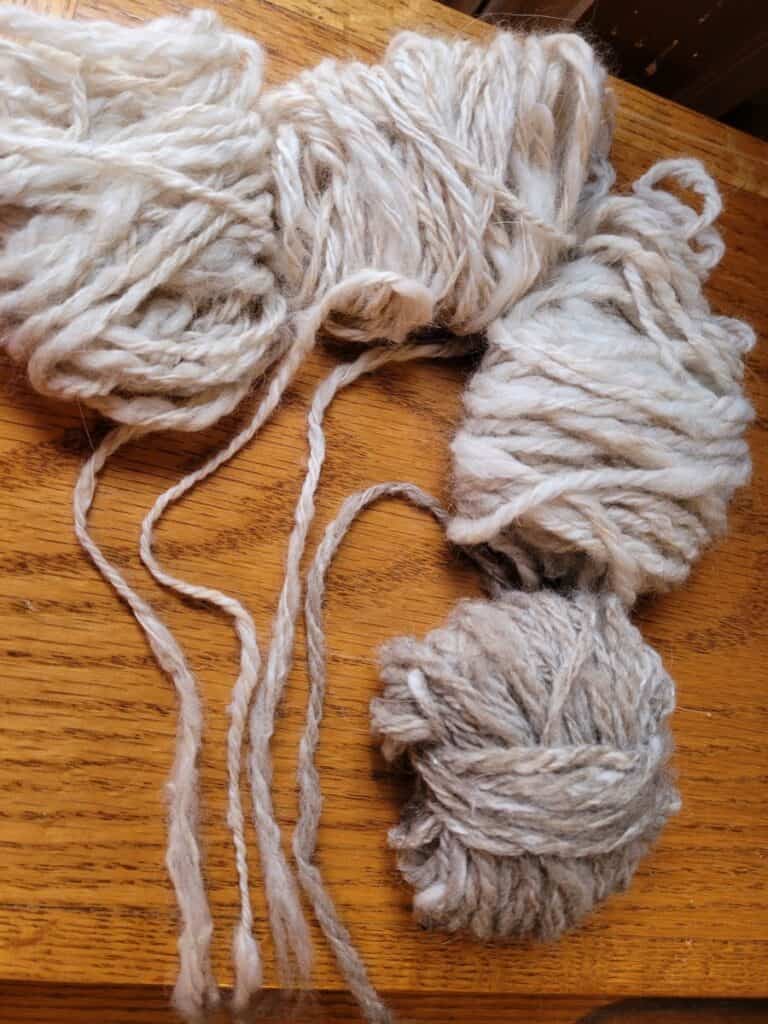
Use 100% angora or blend
You can use your angora fiber to make a 100% angora yarn. Lots of angora lovers choose to spin 100% angora and you can, too! It will take a bit of practice, but you’ll get it.
You may want to try to blend your angora fiber, especially if you are trying to make a soft yarn that needs to have some elasticity to it. 100% angora will not, but a blend will!
The other reason to blend the angora is if you are having trouble making a 100% angora yarn hold together, or you want more wool type properties in your finished yarn.
My favorite blend is 50/50 weighed out on a small digital kitchen scale. You’ll need one that measures small amounts, these fibers are pretty light!
I tend to use a finer wool to keep the softness and add crimp to help hold the yarn together. My top choices so far to blend with angora are Polwarth and Merino, of course.
50/50 works great for me and may work for you, experiment around and see what you like!
How To Spin Angora For Beginners gives you tips on getting started!
Can you use old or rehomed angora fiber?
Can you use older angora fiber, meaning angora that you forgot about for a while or that someone else gave you? Yes, angora is easy to store. Give that fiber a try, you’ll be surprised!
Since a little angora goes a long way, you may have some angora fiber that you ordered a few years ago and never got around to spinning or some extra fiber that you got from a friend.
No worries, angora store very well. Just keep it dry and you are good to go.
I have some angora that I have kept stored in a trunk for a few years now, (more than 5, I think!), from the rabbits that I used to have but never got around to learning how to use it.
Now that I’m back in the spinning groove, I thought that I would give the stored angora a try.
My expectations were low, actually I figured it would be ruined, along the lines of what would happen to unwashed wool that you keep around but forget about.
Almost shockingly, the angora was fine. I was able to use it just like it was shorn recently, it just needed a bit of fluffing up. Nice!
I still had some sorting to do and some bags were definitely higher quality fiber than others, but all of it stored very well.
Kromski (a manufacturer of spinning wheels) has an article about Spinning Angora Fiber, going over the best ways to get started with angora and gives some blending recommendations.

